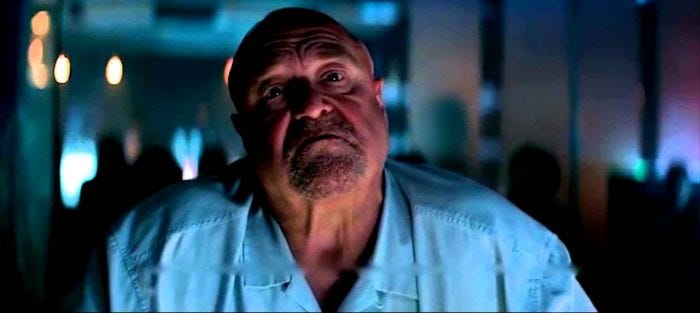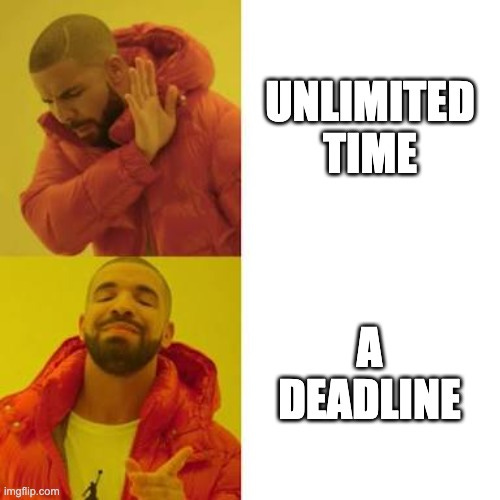The Art of Taking Risks Without Dying
Read this first before launching a new thing
[Disclaimer: I’m not a natural swearer, but I can’t escape this phrase in this context because of the reference. If you are offended, please file a complaint to Paramount Pictures.]
The 2014 movie Gambler starring Mark Wahlberg, John Goodman and Brie Larson wasn’t a great hit, grossing only $34M worldwide. However, Goodman’s character Frank offered a very memorable scene about a life lesson:
Here is the quote:
Frank: You get up two and a half million dollars, any a**hole in the world knows what to do: you get a house with a 25-year roof, an indestructible Japanese-economy sh*tbox, you put the rest into the system at three to five percent to pay your taxes and that’s your base, get me? That’s your fortress of f***ing solitude. That puts you, for the rest of your life, at a level of f*** you. Somebody wants you to do something, f*** you. Boss pisses you off, f*** you! Own your house. Have a couple bucks in the bank. Don’t drink. That’s all I have to say to anybody on any social level.
Did your grandfather take risks?
Jim Bennett: Yes.
Frank: I guarantee he did it from a position of f*** you. A wise man’s life is based around f*** you. The United States of America is based on f*** you. You’re a king? You have an army? Greatest navy in the history of the world? F*** you! Blow me. We’ll f*** it up ourselves.
Potty mouth aside, Goodman offered a great insight to entrepreneurs and artists alike - you can take risks, but make sure you do so with a position of strength, not weakness or desperation. If you want to take risks, make sure it’s calculated, and you can recover.
Peril of a Wantrapreneur
A couple of years ago, a long-time friend called me asking for advice. He was sick of his job and wanted to be an entrepreneur. A year prior, his wife started a business and is treading water. So he wanted to quit the job and help her.
I was like “great! What’s your finance like? Do you have any savings?”
He said “No. I have some debt. I took out a $200,000 loan doing option trading. Now it’s all gone.”
Alarm bells poured out of my skull. “Dude, don’t do it. You might bankrupt yourself and become homeless. You’ve got to get your finances in order before taking on risks like that.”
He was confused, “Wait. Aren’t you the person who took on a similar risk by quitting your job and starting your company, which turned into your author/speaker career? Didn’t you work out a deal with Tracy to make this happen? I want to do what you did.”
I said, “Yes. But I had savings and investment. My deal with Tracy was only for six months. I made sure we wouldn’t run out of money within that period. If I failed at everything, my wife and kid wouldn’t go hungry. That’s different from what you are doing. You are already in debt. You might ruin your marriage and kids’ lives by doing this.”
So what my friend was trying to say “f*** you” to his job without being in the “f*** you” position to do so. The result: he might get f***ed.
Launching Dreams
OK, that's enough swearing in this article. Now let’s talk business.
There is a romantic notion in our society that entrepreneurs and artists are equal to extreme risk takers. You will have to bet everything on something you believe in. It’s do or die, Thelma and Louise, all or nothing, now or never…. Then you prevail and become a mega success, and tell others to take risks and “follow your passion.”
But the truth is: this fashion of risk-taking is littered by bankruptcies, broken families and dead dreams. Risk-taking means taking risks (duh), which means you might, and probably will fail. When you fail, you need to have the ability to get up and do it again, and again. That’s how you succeed in the long run.
And to do so, you need to act like an aircraft carrier, and launch your ventures like fighter jets.
Aircraft carriers are fortresses of the ocean and kings of navies.
Aircraft carriers are technological miracles. Think about it: how can a ship carry a bunch of planes and launch them off into the air like t-shirt cannons at basketball arenas?
If there is a ship that embodies the spirit of “f*** you,” it would be an aircraft carrier.
And if you can act like an aircraft carrier, you’ll be able to take risks without worrying about broken dreams and homelessness.
Here are three components of an aircraft carrier way to launch a dream:
A Runway - Money
Good old-fashioned dough.
Over the years, many people hearing my speech and reading my book would compliment my courage to quit my six-figure job and pursue my dream of entrepreneurship.
But truth be told, that decision wasn’t about bravery and courage, but more about foresight and planning. Because I had spent the previous years working, saving and investing.
I became an investment nerd at age 24, and I put money into stocks I had liked every year since. I invested in companies like Amazon, Apple, Google and Costco, not because of financial insight or quantitative analysis, but only because I loved and couldn’t live without their products.
I called this methodology Love Investing.
In seven years, even through the depth of the 2008 financial crisis, my investment returned 20%+ per year. When I was 30, I was debt-free and had six figures in my portfolio.
When Tracy became pregnant, we talked about the crossroad I was facing. If I didn’t quit my job and dive head-first into my entrepreneurial dream before the baby was born, I was probably never going to do it afterward.
But that decision was laden with anxiety.
Then we sat down, opened our investment account and read the number. The anxiety vaporized like candy in a toddler’s hand.
We knew if I didn’t work for two years, we were going to be OK. If my idea didn’t work, we were going to be OK. If everything could go wrong actually went wrong, we were going to be OK.
Our savings would dwindle to zero. We wouldn’t go on vacations and buy cars. But we weren’t going to be hungry, and the baby would have milk.
Knowing I had two years of runway gave me all the peace and motivation to go full speed ahead.
Successful companies know all about runways. Remember Metaverse? The product that would save
Facebook and define the next chapter of the internet? In fact, Mark Zuckerberg believed in it so much that he renamed his company to Meta.
Well, it failed harder than a regular Joe’s New Year’s resolutions. But no one talks about it, and no one cared. If you look at Meta stock, it’s at an all-time high. It was because Facebook had the financial runway to launch a massive project like the Metaverse, fail spectacularly and not die.
In your own venture, whether it’s entrepreneurship, or launching a project within your own company, always remember to build a runway before you jump in.
A Tripwire - Time
The second component is time. But it is not what you think it is.
You might think time is also a runway, and it is about having enough time to meticulously turn ideas into reality. So the longer, the better, right?
The opposite is true. Time is a tripwire—a deadline to show progress.
On an aircraft carrier, for a plane to take off, it needs to run at a certain velocity. If not, it would plunge into the ocean at the end of the runway. How do you know if the plane is going to make it? You don’t find out after it’s in the air. You find out WAY before. Say a third of the way through, if it’s not meeting the velocity requirement, the plane would brake and stop, avoiding a disaster. That’s what a tripwire is.
Now in our case, Tracy and I agreed that I would have six months to show real progress, not two years. By the end of six months, I needed to get investment from investors or find paying customers. If I had neither, I would look for another job again.
That tripwire gave me two benefits: 1. I wouldn’t waste two years of money before finding out my venture was dead in the water. 2. I was forced to go at full velocity. Day and night, I was working as hard as I could because I knew the deadline was coming.
In fact, it was the six-month deadline that forced me to think outside the box when my business wasn’t showing progress. Four months into my venture, I started blogging about rejection, not as a hobby, but as a desperate way to elevate myself as an entrepreneur, but also as content marketing.
Hey, if people liked my blog, maybe they would like my product too, so I thought.
Well, as it turned out, people loved my blog so much that I got millions of views, which opened the door for another direction I wasn’t looking at or even knew existed—writing and speaking on rejection.
Ten years, one bestselling book, and 400 speaking engagements later, I’m truly living the dream, only enabled by that six-month tripwire.
I wasn’t the only person using a tripwire as a success tool. Elon Musk, politics aside, is famous for setting crazy, artificial deadlines for Tesla and SpaceX. This tactic forced his companies to innovate to meet his requirements, allowing them to survive and thrive before possible dooms.
If you want to launch a project, don’t give yourself an unlimited amount of time, even if you could afford it. To manufacture ingenuity and desperation, set yourself a deadline as a tripwire.
A Catapult - Career Capital
If you understand modern aircraft carriers, you know that the runways are not long enough for planes to take off at normal speed. They don’t need to be. They have a catapult system called the Electromagnetic Aircraft Launch System (EMALS). Think of it as a slingshot to fire planes into the air, giving them the added speed to take off.
In career ventures, career capital can act like a catapult—letting you go faster than normal speed and launch you into the stratosphere. What’s career capital? It’s defined in Cal Newport’s book So Good They Can’t Ignore You. It means all the experiences, knowledge, and accomplishments you’ve built up in your career that are relevant to your new venture.
In my case of writing and speaking, I had a very fast rise. English is not my first language, and I still speak with an accent today. But my first book sold so well that it became a #1 bestseller on Audible. Its success also gave me the capital to get an even better book contract for my second book.
For speaking, I went from commanding $500 for my first talk to $1,000, $5,000, $15,000, and $20K+ per talk in a span of a few years.
How did I do it?
Well, I had my own career capital to build on as my catapult. I spent years reading up on psychology and personal development theories. While getting my MBA, I spent most of my elective classes on Marketing and Behavioral Economics. Even my work experience and entrepreneurship in tech contributed to my way of thinking. So my writing and speaking weren’t based on hot air but on years of accumulated knowledge and cross-pollination with real-world experience. That’s how I could achieve the velocity in writing and speaking.
In your new venture or new project, don’t start something where you have to learn from ground zero. You will lose all your career built-up and knowledge foundation. In fact, the more relevant intellectual accumulation you’ve gathered, the higher speed your catapult will give you for your new direction.
Conclusion
We all understand resilience. We all want to live a dream life, looking back and telling a story of taking risks and facing failures.
But in reality, those stories are more beautiful if they’re about overcoming failures, not succumbing to them. To minimize, afford, and recover from failures, you need to build yourself the runway, the tripwire, and the catapult to take risks and launch ideas without dying. That’s how you build yourself your own aircraft carrier.
And in John Goodman’s poetic words: look risk in the eye and say, “f*** you.”








Great tale, detail, intelligent, and advice!
Love this article! Just the right time for me to understand the whole employee -> founder mentality.